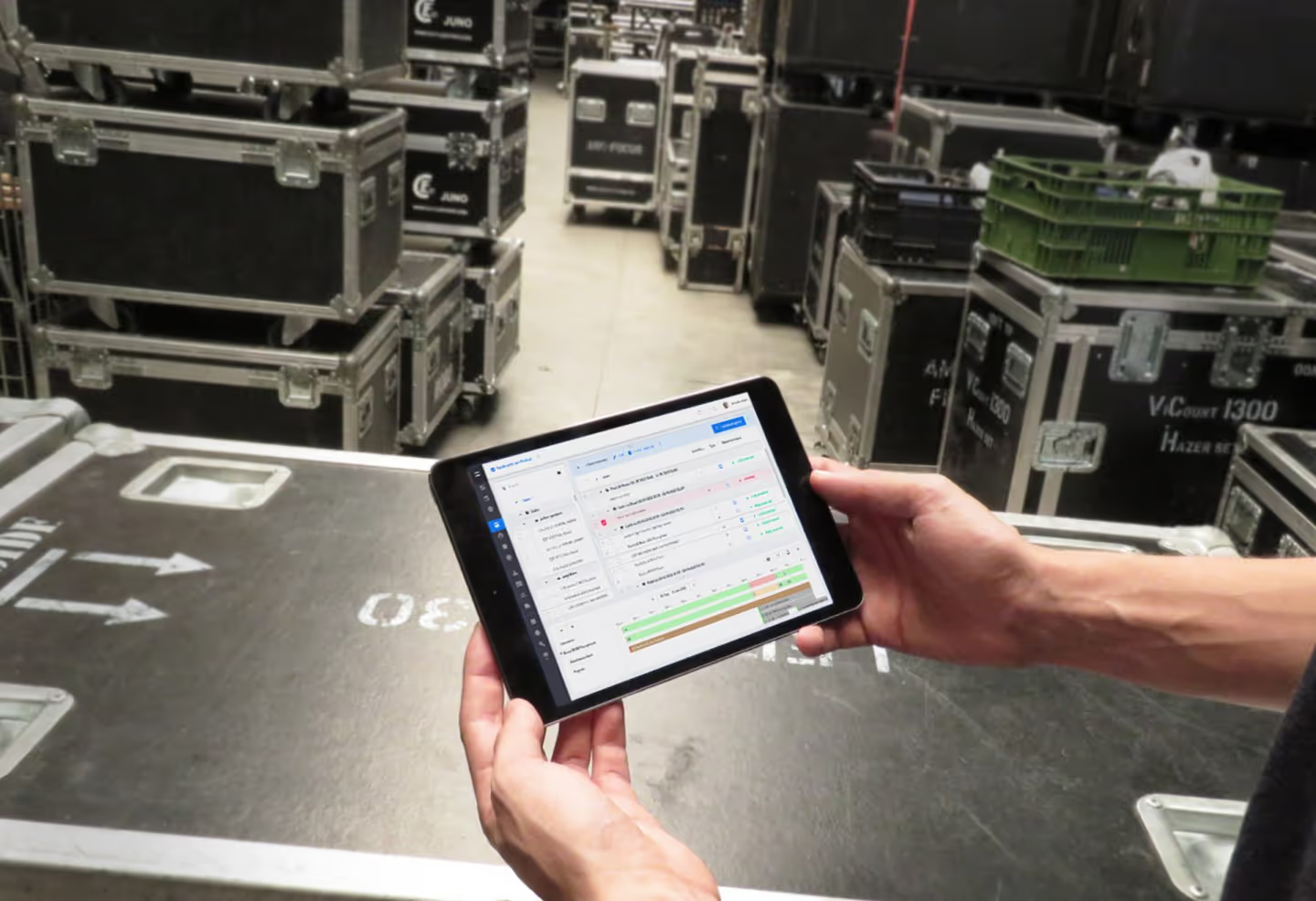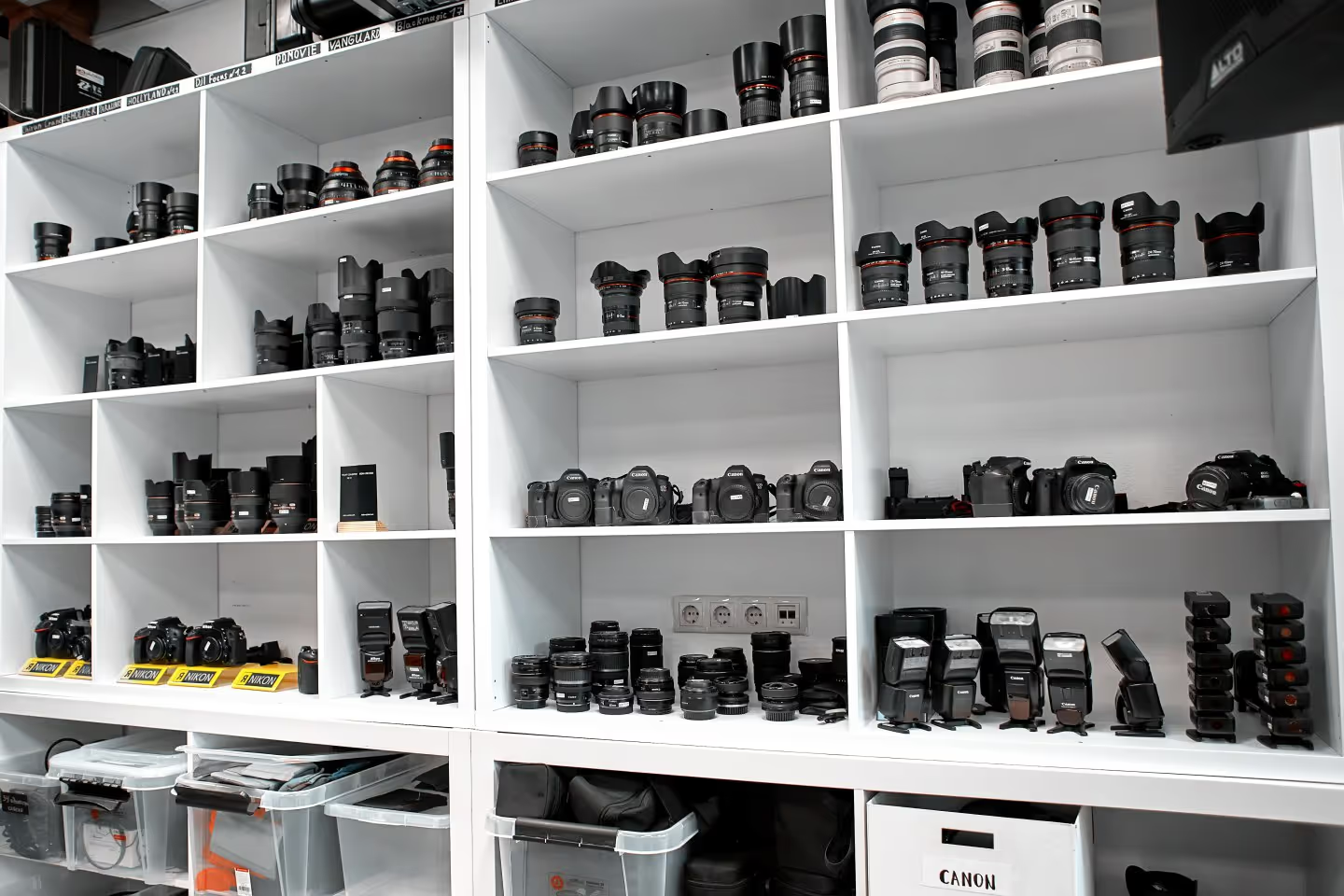Discover the Best Equipment Rental Software for Your Business Needs

Navigating the world of equipment rental can be challenging, especially when it comes to finding the best equipment rental software for your event business needs. With numerous options available, each offering a variety of features and capabilities, it’s essential to understand which equipment tracking software will streamline your operations, enhance your efficiency, and ultimately contribute to your business’s success.
In this guide, we will delve into the key considerations for selecting the best equipment rental software, compare top contenders in the market, and provide insights to help you make an informed decision. Let’s embark on this journey to discover the ideal solution for your equipment rental business here.
1. Understanding Equipment Rental Software
2. Evaluating Your Business Needs
3. Implementing Equipment Rental Software
4. Future Trends in Rental Software
Understanding Equipment Rental Software
What is Equipment Rental Software?
Equipment rental software is a specialized tool designed to manage the operations of businesses that rent out equipment for events. This software helps streamline various aspects of the rental process, including inventory management, order processing, scheduling, and billing. By centralizing these functions, it allows event rental companies to efficiently track their equipment, reduce manual errors, and improve customer service, which are crucial in rental management.
Additionally, many of these customizable rental management software solutions offer features such as real-time availability updates, maintenance scheduling, and detailed reporting. Ultimately, equipment rental software aims to enhance the overall efficiency and profitability of event rental businesses by automating routine tasks and providing valuable insights into operations.
Importance for Business Efficiency
The importance of equipment rental software for business efficiency cannot be overstated in the event industry. This software automates and streamlines various processes that are typically time-consuming and prone to error when handled manually. For the rental assets for instance, it can automate invoicing, track equipment availability in real-time, and schedule maintenance. These features not only save time but also minimize the risk of double bookings or overbooking equipment, which can be particularly critical in the fast-paced world of event planning.
Moreover, detailed analytics and reporting tools provide insights into utilization rates, financial performance, and operational bottlenecks. This data-driven approach enables event rental businesses to make informed decisions and optimize their resource allocation. By reducing administrative tasks and improving accuracy, equipment rental software allows event rental businesses to focus more on customer service and strategic growth, thus enhancing overall productivity and profitability.
Key Features to Look For
When selecting the best equipment rental software for rental companies, there are several key features to consider. First, robust inventory management capabilities are essential, including real-time inventory tracking, of equipment availability, condition, and location. Second, the software should offer seamless booking and scheduling functions, allowing customers to easily reserve equipment for specific events. Third, comprehensive billing and invoicing options are critical for streamlining financial transactions and ensuring accurate billing.
Additionally, look for software that includes maintenance management features to schedule and track equipment repairs and upkeep, ensuring that equipment is always in optimal condition for events. Reporting and analytics features are also important, as they provide insights into business performance and help identify areas for improvement. Integration capabilities with other systems, such as CRM or accounting software, can further enhance operational efficiency.
Finally, ensure the software has a user-friendly interface and reliable customer support to facilitate smooth implementation and ongoing use.
Evaluating Your Business Needs
Identifying Core Requirements
Before choosing the best equipment rental and customer relationship management software for rental, it's crucial to identify your core requirements. Start by evaluating your current processes and pinpointing the areas that need improvement. Consider the size of your inventory and the complexity of your event rental operations. Do you need advanced features like GPS tracking or maintenance scheduling for large-scale events? Next, assess your customer base and their expectations. Are they looking for online booking options or mobile app accessibility for convenience?
Additionally, think about your financial management needs—will you require integration of inventory management software with accounting software or detailed financial reporting for event sponsorships and tax purposes? Finally, consider the scalability of the software. As your event rental business grows, you'll want a solution that can adapt and expand alongside your operations, handling larger events and increased demand. By clearly defining your core requirements, you can narrow down your options and select a software solution that best fits your specific needs in the event industry.
Assessing Scalability and Flexibility
In evaluating equipment rental software for the event industry, assessing scalability and flexibility is vital. Scalability ensures that the software can grow with your business, accommodating larger events and increased demand.
As you expand your inventory or customer base, the software should seamlessly handle increased data loads and additional users without compromising performance. Flexibility, on the other hand cloud based software only, means the software can adapt to changes in your event rental business processes or market demands. Look for customizable features that allow you to modify workflows, reporting, and user permissions to suit evolving needs, such as handling last-minute event changes or integrating with new event planning tools.
Additionally, consider whether the software can integrate with other systems, such as accounting or CRM tools, facilitating a cohesive technological ecosystem for event management. Cloud-based solutions often provide greater scalability and flexibility, allowing for easy updates and access from multiple locations. By prioritizing scalability and flexibility, you ensure your software investment remains valuable and effective long-term, supporting your event rental business through various growth phases and operational changes.
Budget Considerations
When selecting equipment rental software for your event rental business, budget considerations are a crucial factor. Start by defining a clear budget that balances cost with the features you need. Consider both the initial purchase price and ongoing expenses such as subscription fees, maintenance, and support services. It’s essential to evaluate the total cost of ownership over time, rather than just the upfront costs. Some equipment maintenance software providers offer tiered pricing plans, allowing you to choose a package that fits your current needs and upgrade as your event rental business grows.
Additionally, assess whether the software offers a free trial or demo, which can help you determine if it meets your requirements before committing financially. While it might be tempting to choose the cheapest option, prioritize value over cost, ensuring the software delivers the necessary functionality and support to enhance your event rental operations. By carefully considering your budget, you can select a comprehensive software solution that is both affordable and effective for rental companies.
Implementing Equipment Rental Software
Steps for Successful Integration
Integrating equipment rental software into your event rental business requires careful planning and execution to ensure a smooth transition. Begin by clearly defining your goals and objectives for the software implementation. This will guide the integration process and help measure success. Next, involve key stakeholders from various departments in your event rental business to gather input and secure buy-in.
Their insights can help identify potential challenges and ensure the software meets everyone's needs. Conduct a thorough review of your existing show rental processes and data to identify necessary adjustments or clean-up before migration. Choose a software provider that offers robust support and training resources to assist during the transition. Plan for a phased rollout, starting with a pilot program to test the system and address issues before full-scale implementation.
inally, establish a feedback loop with users to continuously improve and optimize the software's usage. Following these steps can lead to a successful integration, enhancing efficiency and productivity in your event rental business operations.
Training and Support Options
Effective training and support are critical components of implementing new equipment rental software in the event industry. Ensuring that your team is well-prepared to use the system will maximize its benefits. Many software providers offer a range of training options, from online tutorials and webinars to in-person sessions, tailored to different learning styles and needs. It's essential to evaluate these training resources before choosing a software, ensuring they align with your team's requirements.
In addition, comprehensive support options are crucial for addressing any technical issues or questions that may arise post-implementation. Look for cloud-based rental software providers that offer multiple support channels, such as phone, email, and live chat, along with a responsive customer service team. Some solutions may also include dedicated account managers for personalized assistance.
By prioritizing strong training and support options, you can facilitate a smoother transition to the new system, empowering your staff to fully leverage its capabilities and improve operational efficiency in your event rental business.
Measuring Success and ROI
To determine the effectiveness of your new equipment rental software in the event industry, it's crucial to measure success and calculate the return on investment (ROI). Start by establishing clear, quantifiable goals for what you want to achieve with the software, such as increased efficiency, reduced operational costs, or improved customer satisfaction. Track key performance indicators (KPIs) that align with these goals, such as inventory turnover rates, booking accuracy, or customer feedback scores. Regularly reviewing these KPIs will provide insights into how well the software meets your business needs.
Additionally, calculate the ROI of your small rental company software and equipment software by comparing the total cost of the software against the financial benefits gained from improved efficiency and productivity in your event rental business. Consider factors such as time savings, error reduction, and increased revenue. This analysis will help you assess whether the software is delivering the expected value and assist in identifying areas for further optimization. By systematically measuring success and ROI, you can ensure the software remains a valuable asset to your event rental business.
Future Trends in Rental Software
Emerging Technologies
Emerging technologies are set to revolutionize the equipment rental software landscape for the event industry, bringing new capabilities and efficiencies. One such technology is the Internet of Things (IoT), which enables real-time tracking and monitoring of equipment through connected sensors. This can help event rental businesses improve maintenance schedules, optimize asset utilization, and ensure equipment is always ready for events.
Artificial intelligence (AI) and machine learning (ML) are also making headway, offering predictive analytics that can forecast demand for event equipment, streamline inventory management, and enhance decision-making. Additionally, blockchain technology is gaining traction for its potential to improve transparency and security in rental transactions, particularly for high-value equipment used in events. Augmented reality (AR) and virtual reality (VR) are being explored for remote equipment demonstrations and training, providing a more immersive user experience for event planners.
As these technologies continue to evolve, event equipment rental businesses that adopt them early will gain a competitive edge, enhancing their operational efficiency and customer satisfaction in the rapidly changing market.
Adapting to Industry Changes
Adapting to industry changes is crucial for staying competitive in the event rental market. As technology advances and customer expectations evolve, event rental businesses must remain agile and responsive. This starts with continuously monitoring industry trends and technological innovations, such as the growing popularity of virtual and hybrid events. Incorporating emerging technologies like IoT, AI, and blockchain can offer new efficiencies and enhance customer service. For tool rental businesses for instance, predictive analytics powered by AI can help better forecast demand for event equipment, while IoT devices can provide real-time data on equipment usage and condition.
Additionally, staying updated with regulatory changes and compliance requirements is essential to avoid potential legal challenges. Flexible software solutions that allow for easy updates and integration with other systems can help rental companies quickly adapt to these shifts. Engaging in regular staff training and fostering a culture of continuous improvement will also ensure your team is prepared to embrace new tools and processes, securing your position in a dynamic market.
Preparing for Future Needs
Preparing for future needs in the event rental industry involves strategic planning and foresight. Start by evaluating current operations and identifying areas that may need enhancement as the industry evolves, such as incorporating virtual event elements or offering new types of equipment rentals.
Consider adopting scalable software solutions that can grow with your event rental business, providing flexibility to incorporate future technological advancements like AI or IoT. Conduct regular assessments of your equipment rentals' portfolio to ensure it meets emerging market demands and remains competitive. Investing in employee training and development is crucial to equip your team with the skills needed to handle new technologies and processes.
Additionally, maintain an open dialogue with customers to understand their evolving needs and expectations. This feedback can guide product and service innovations, ensuring you remain customer-centric. By proactively planning and being open to change, your event rental business will be better positioned to adapt to future industry trends, maintaining relevance and driving long-term success in an increasingly competitive market.
FAQ
Frequently asked questions
No items found.
Previous blog posts

Understanding Equipment Rental Agreement Terms and Conditions: A Practical Guide
Understanding Equipment Rental Agreement Terms and Conditions: A Practical Guide

Unlock Efficiency: How Cloud Based Rental Software Transforms the Event Industry
Unlock Efficiency: How Cloud Based Rental Software Transforms the Event Industry

